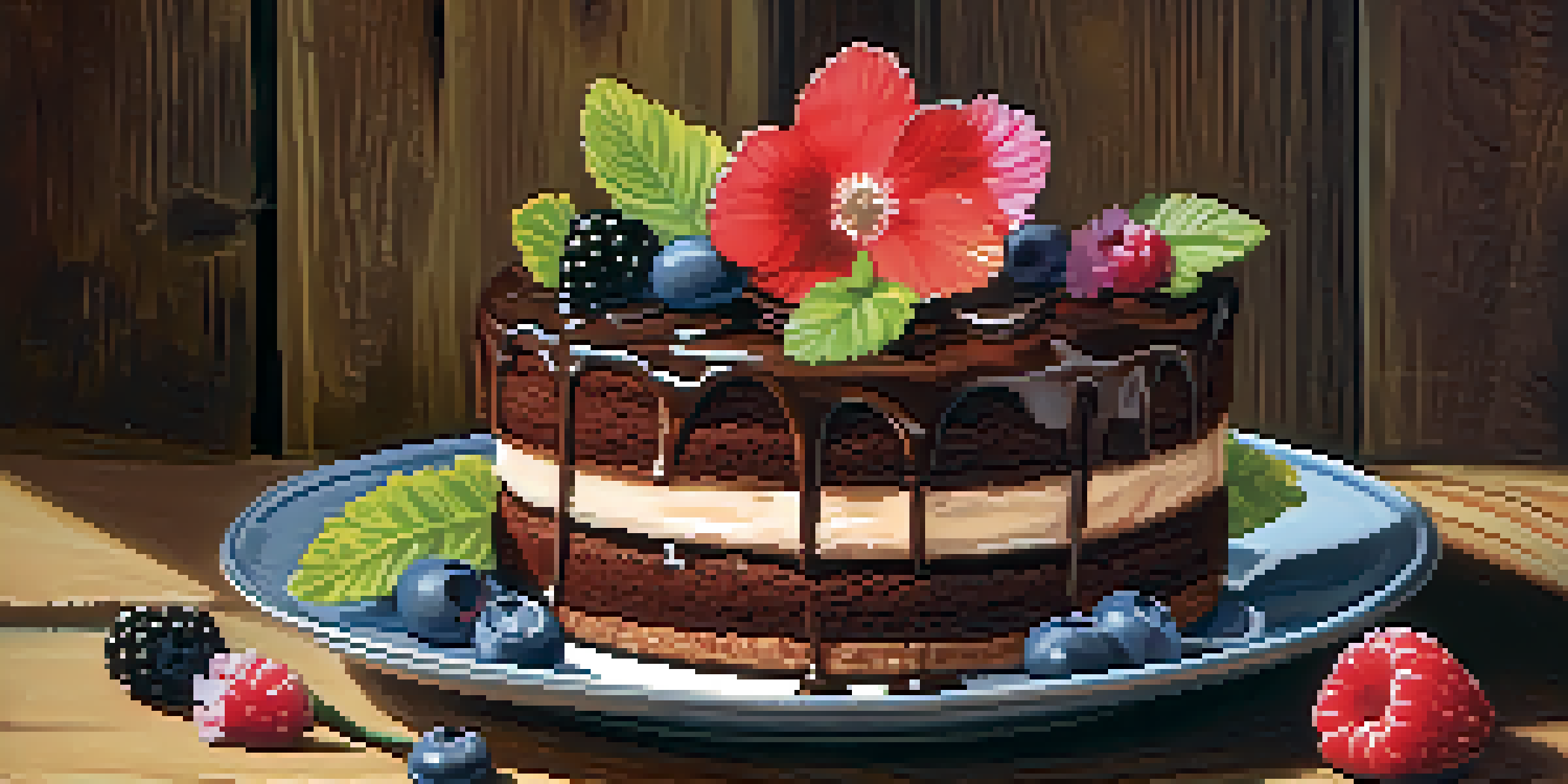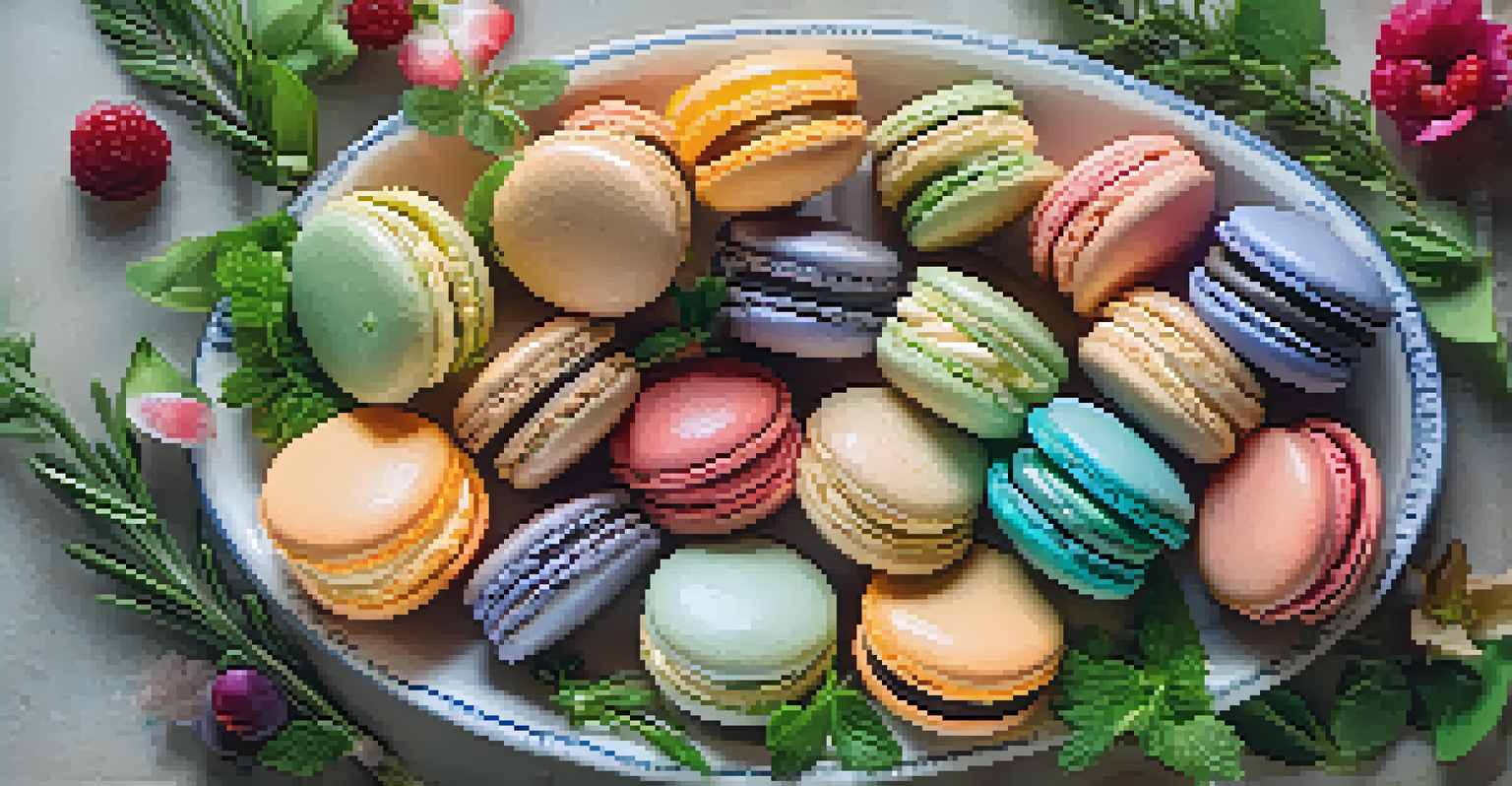Advanced Baking Techniques: Elevating Your Dessert Skills

Understanding the Science Behind Baking Techniques
Baking isn't just about following a recipe; it's a science that combines ingredients in precise ways to achieve desired results. Understanding the role of each component—like how flour provides structure or how eggs contribute to moisture—can elevate your desserts significantly. This knowledge empowers you to troubleshoot issues and make informed substitutions, leading to better outcomes.
Baking is both an art and a science. Understanding the science will help you create beautiful art.
For instance, if you find your cakes are too dense, it might be due to overmixing the batter. Knowing when to mix and when to fold can be the difference between a heavy brick and a light, airy sponge. By grasping these core principles, you're laying a solid foundation for more advanced techniques.
So, before diving into complex recipes, take a moment to familiarize yourself with the science of baking. This understanding will enhance your confidence and creativity in the kitchen.
Mastering the Art of Pâte à Choux for Cream Puffs
Pâte à choux, or choux pastry, is a versatile dough that can seem intimidating at first, but mastering it can open up a world of delicious desserts. This dough is unique because it’s cooked on the stovetop before being baked, allowing it to puff up beautifully in the oven. The result? Light and airy pastries like cream puffs and éclairs.

To make perfect pâte à choux, start by combining water, butter, and a pinch of salt in a saucepan. Once the butter melts, stir in the flour until it forms a smooth ball. Then, mix in eggs one at a time until the dough is glossy and holds its shape. With practice, you'll find that piping them into different shapes can yield stunning results.
Baking is a Science
Understanding the role of ingredients and techniques can significantly improve your baking results.
Once baked, these pastries can be filled with pastry cream, whipped cream, or even savory fillings. Experimenting with flavors and textures will undoubtedly elevate your dessert repertoire.
Creating Decadent Layered Cakes Like a Pro
Layered cakes are not only visually stunning but also allow for a delightful mix of flavors and textures. To achieve that professional look, start with baking even layers. Use a kitchen scale to ensure each layer weighs the same—this will help your cake stack evenly and look polished.
The secret to a great dessert is not just in the recipe, but in the careful balance of flavors and presentation.
Next, focus on your frosting technique. A crumb coat—a thin layer of icing to seal in crumbs—will give you a smooth base for your final layer of frosting. Don’t forget to chill your cake for a bit after this first coat; it makes the final frosting layer much easier to manage.
Finally, get creative with decorations. Fresh fruits, edible flowers, or chocolate shavings can transform your cake into a masterpiece that tastes as good as it looks.
Exploring the World of French Pastry Techniques
French pastry techniques are renowned for their elegance and complexity, making them a great skill set to add to your baking arsenal. Techniques like tempering chocolate, making macarons, or creating delicate tarts can elevate your dessert game immensely. Each method has its own nuances that can challenge and excite any baker.
For example, making macarons requires precision and patience, from whipping the egg whites to achieving the perfect consistency. Once mastered, these colorful confections can be filled with endless flavor combinations, showcasing your creativity.
Mastering French Pastry Techniques
Learning classic methods like pâte à choux and macarons can elevate your dessert creations.
Additionally, mastering techniques like pâte sucrée for tarts can yield rich and buttery crusts that serve as the perfect base for seasonal fruits or decadent chocolate fillings. Learning these techniques can add a touch of French flair to your dessert repertoire.
The Importance of Temperature in Baking
Temperature plays a crucial role in baking, affecting everything from texture to rise. For instance, using room temperature eggs and butter in your recipes allows them to emulsify better, resulting in a smoother batter. On the other hand, ingredients that are too cold can lead to dense and unappetizing baked goods.
Beyond ingredients, the temperature of your oven is equally important. An oven thermometer can help you ensure that your oven is at the correct temperature, preventing underbaking or overbaking. This small investment can make a significant difference in your baking outcomes.
Lastly, remember that cooling baked goods at the right temperature is essential too. Allowing cookies to cool on the baking sheet for a few minutes before transferring them to a wire rack helps them maintain their shape while ensuring they don’t become tough.
Harnessing the Power of Flavor Pairings in Desserts
Flavor pairings can take your desserts from ordinary to extraordinary. Understanding which flavors complement each other allows you to create unique and memorable desserts. For example, the combination of chocolate and sea salt enhances the sweetness while adding a sophisticated touch.
Consider experimenting with herbs and spices as well. Basil with strawberries or rosemary with lemon can create unexpected yet delightful flavor profiles that surprise and delight your taste buds. It’s all about balancing sweetness with acidity and earthiness.
Presentation Enhances Desserts
Beautiful plating and garnishing can transform a simple dessert into an impressive work of art.
As you explore flavor pairings, don’t hesitate to take inspiration from other cuisines. Incorporating ingredients like cardamom in your pastries or using matcha in your cakes can introduce exciting new tastes that keep your desserts fresh and innovative.
Plating and Presentation: The Final Touches
Once you’ve mastered the baking process, it's time to focus on presentation. Beautiful plating can elevate even the simplest dessert into a work of art. Consider the colors, shapes, and textures of your components when designing your plate. A drizzle of sauce, a sprinkle of nuts, or a dollop of whipped cream can add that final touch.
Additionally, using different heights and layers on the plate can create visual interest. Stack your desserts or use molds to build height, adding drama to your presentation. Remember, we eat with our eyes first, so making your dish appealing is just as important as its taste.

Finally, don’t forget about garnishing. Fresh herbs, edible flowers, or even a dusting of powdered sugar can make your dessert pop. With these simple techniques, your desserts will not only taste incredible but also look dazzling.